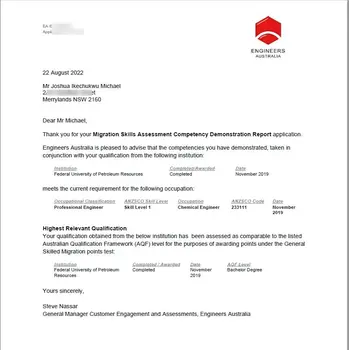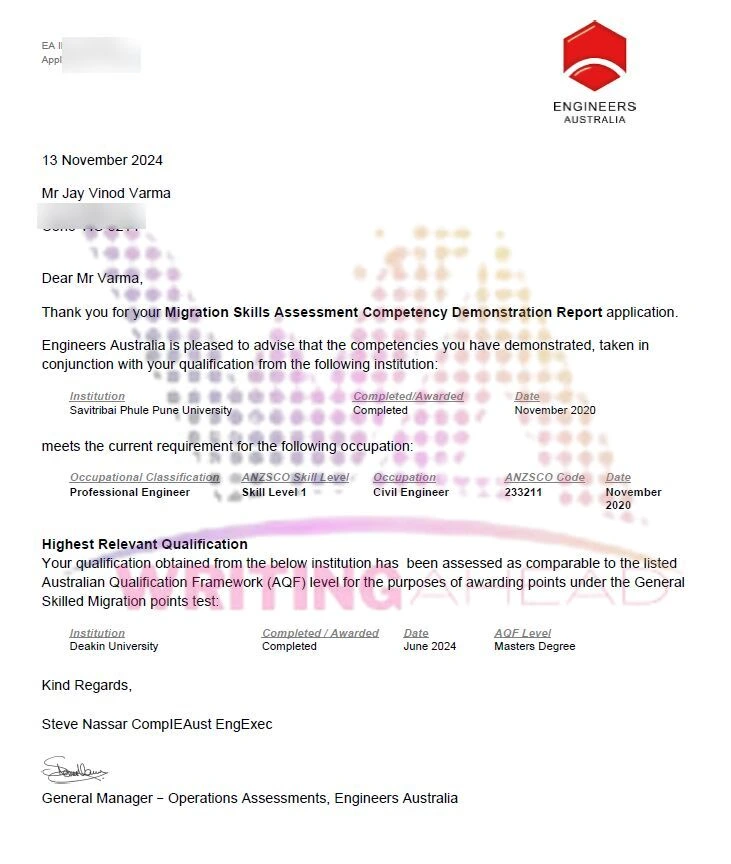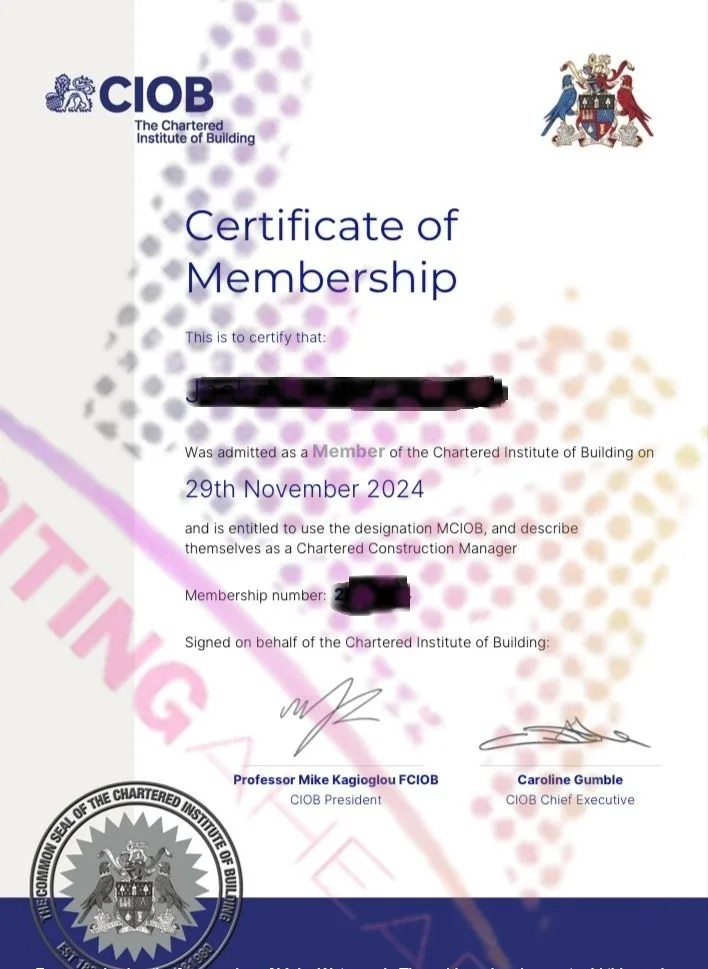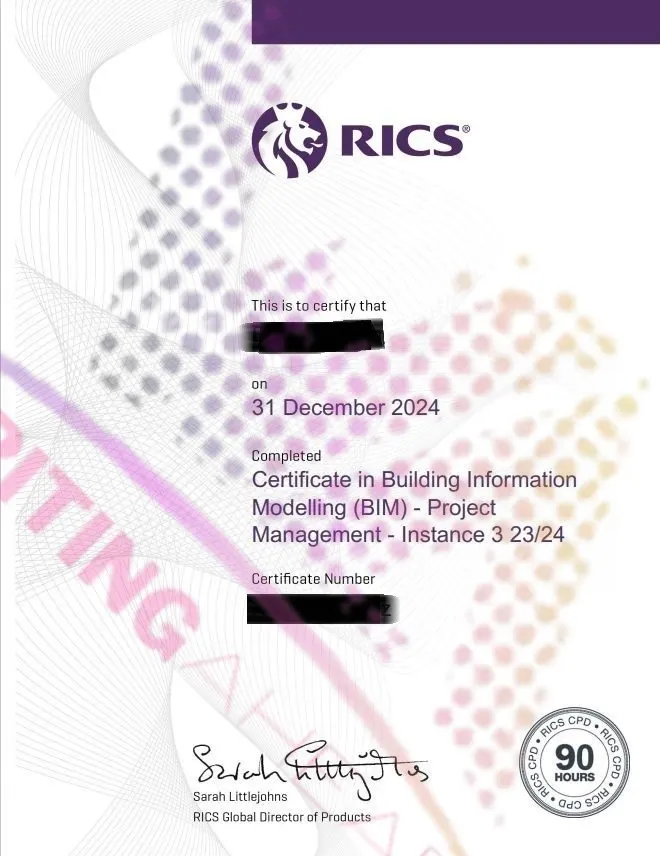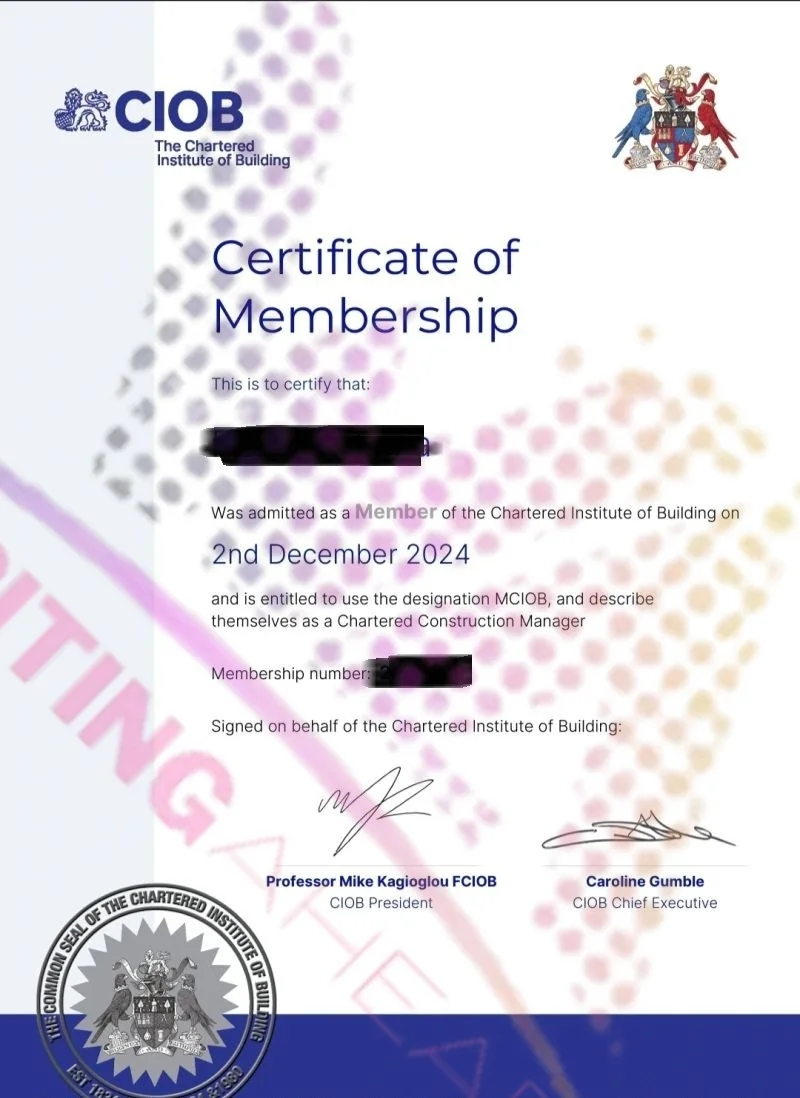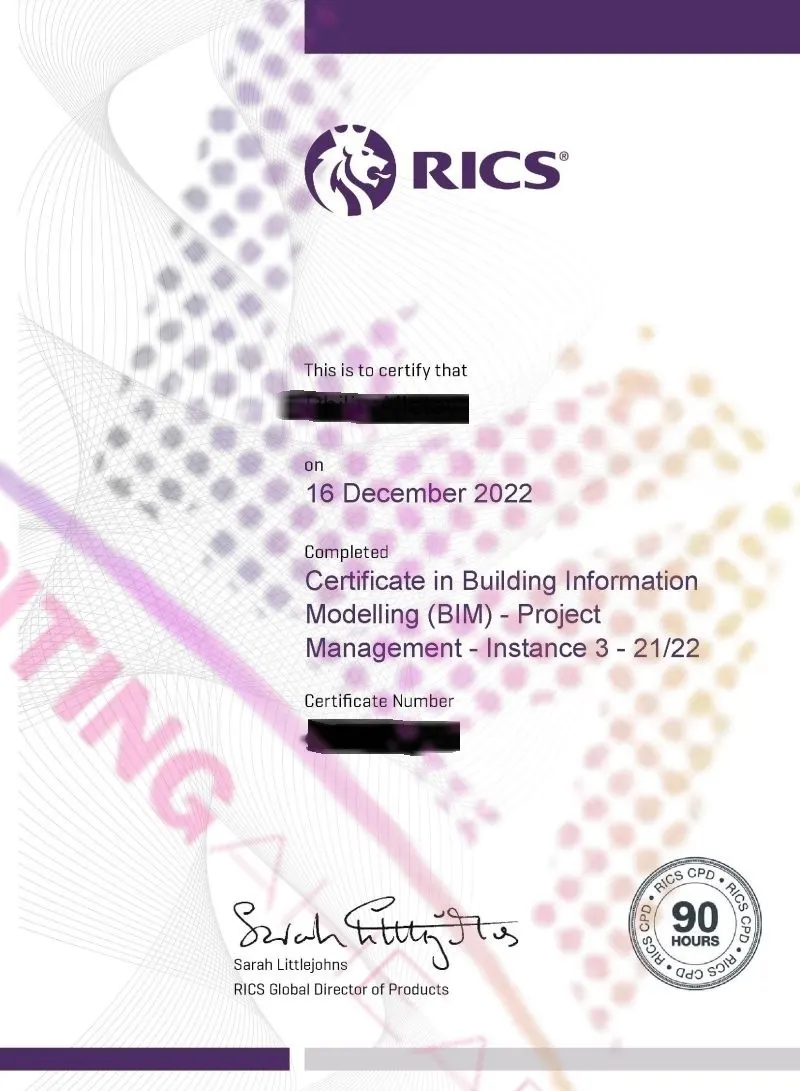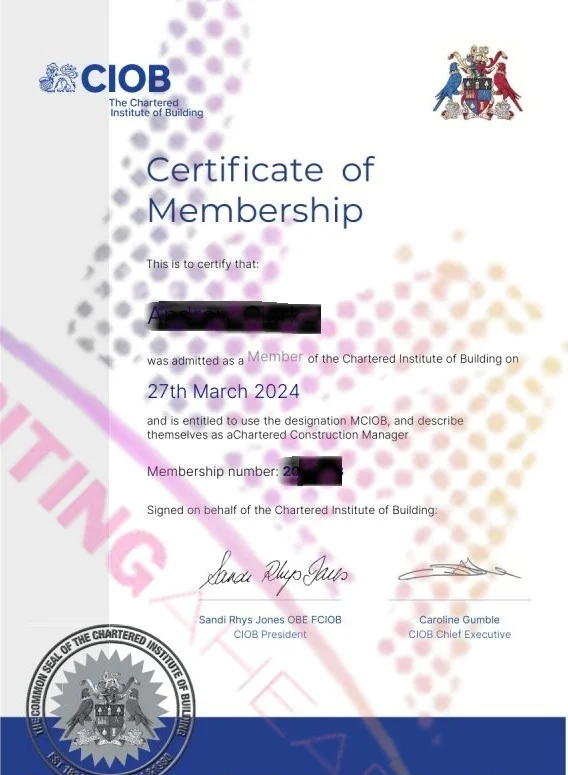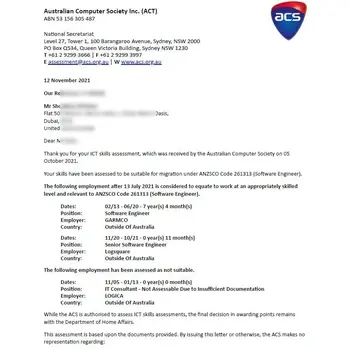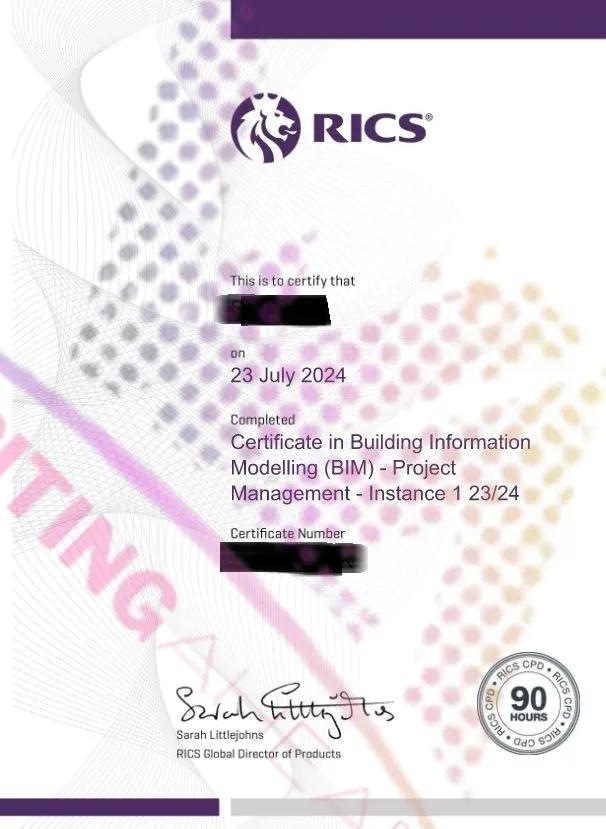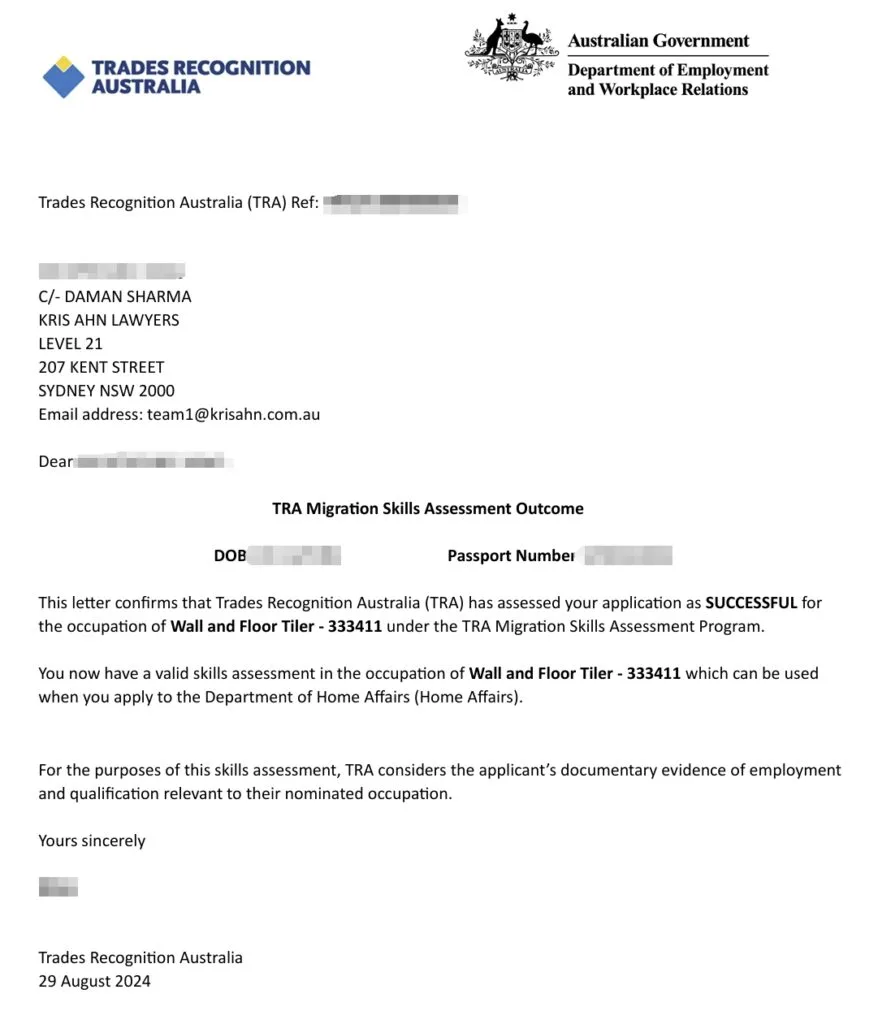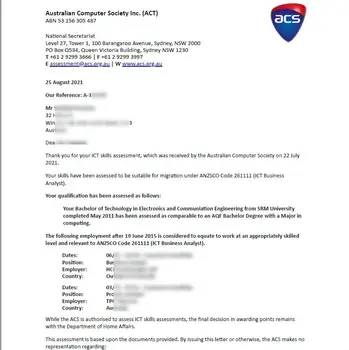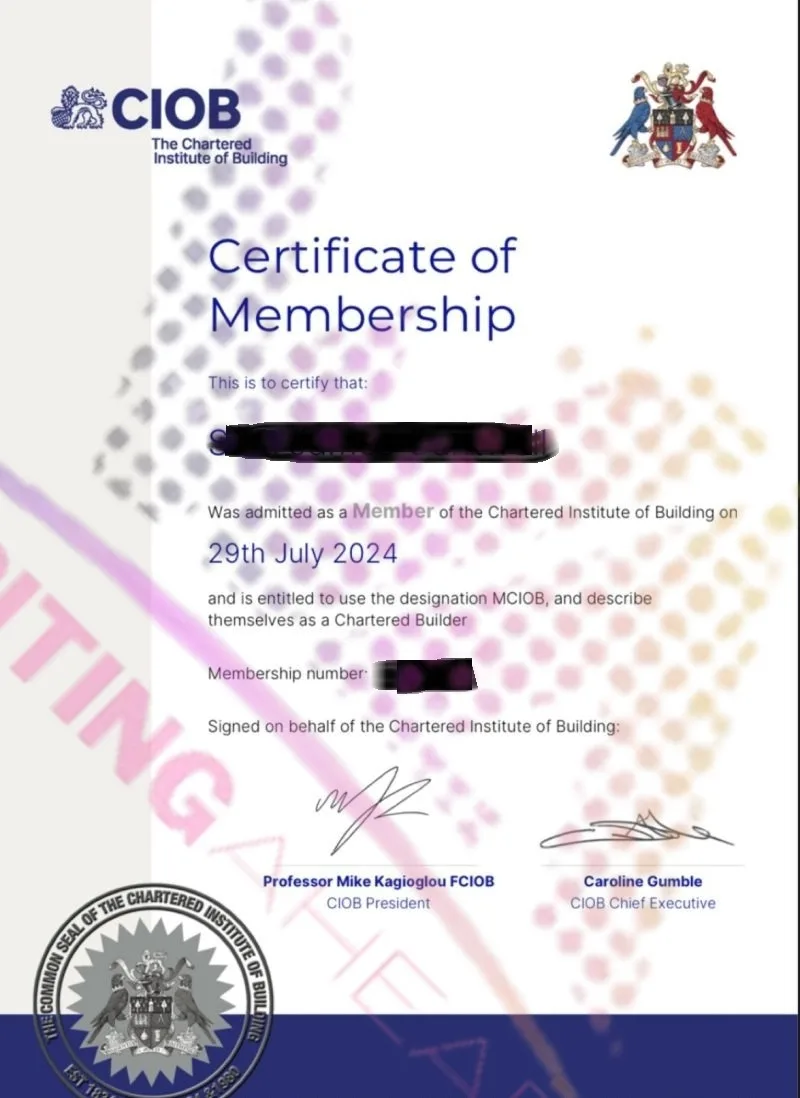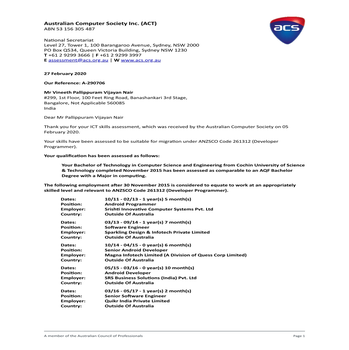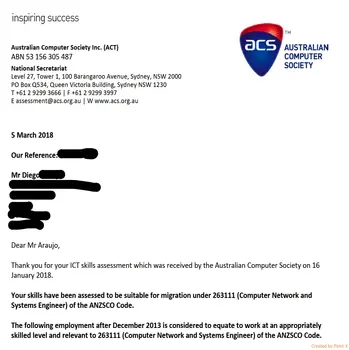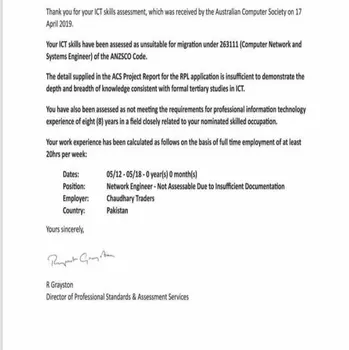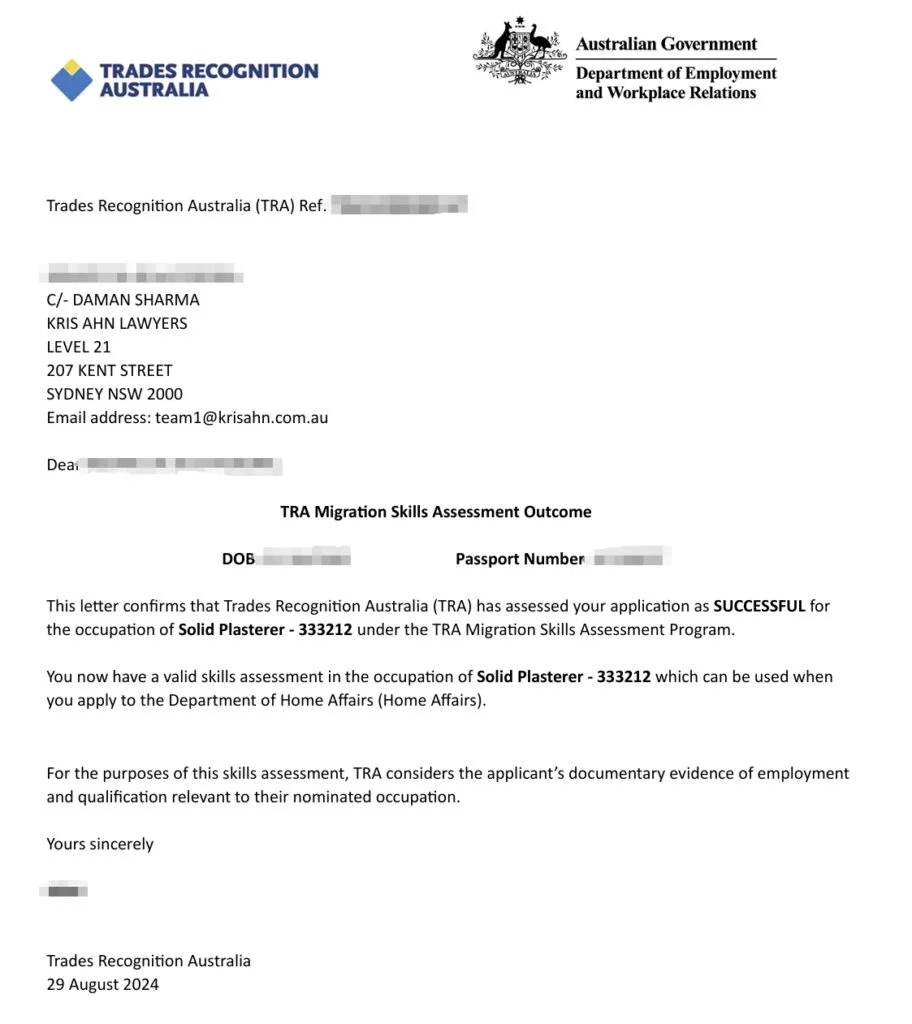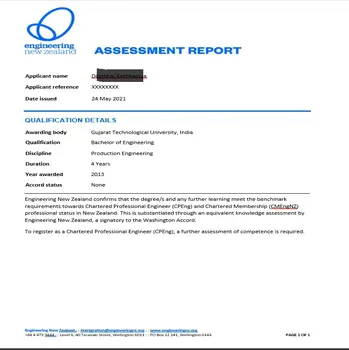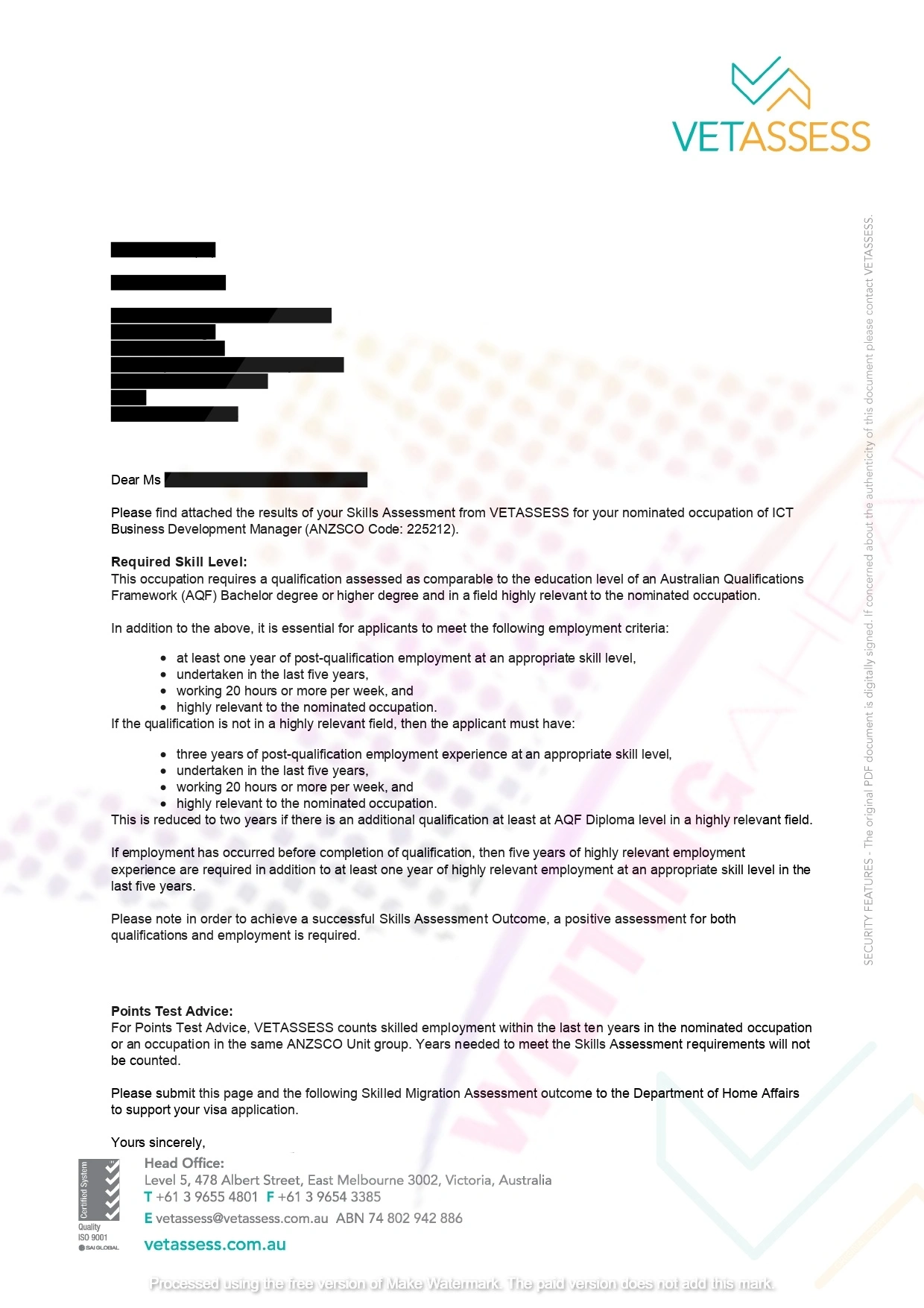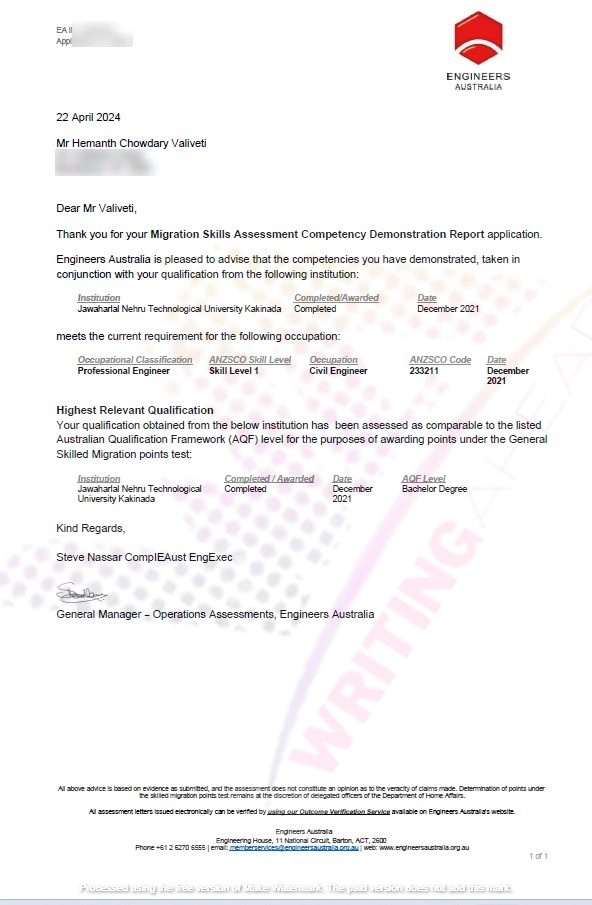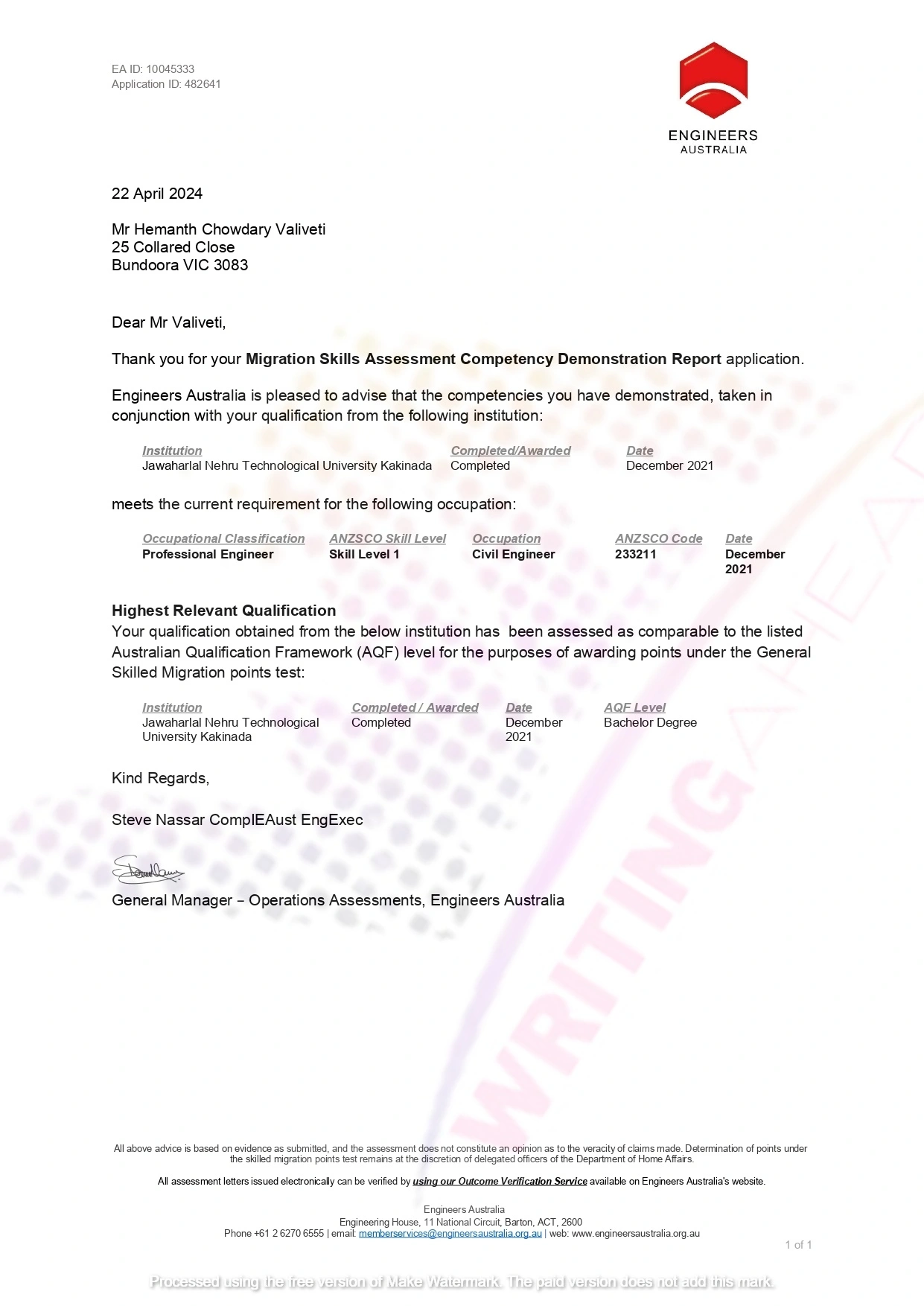What is CPEng Chartered Engineer in Australia
CPEng (Chartered Professional Engineer) is a prestigious professional certification awarded by Engineers Australia (EA) to engineers who demonstrate high levels of competence, ethics and leadership in their engineering discipline This means if the engineer meets professional standards universally recognized and complex -Able to carry out independent and responsible engineering work. The CPEng certificate is highly respected in the industry and essential for engineers seeking senior positions, leadership roles and independent roles in Australia and around the world.
CPEng Eligibility Requirements
To apply for a CPEng position, an engineer must meet the following requirements.
- 1. Qualifications: A four-year engineering degree recognized by the Washington Convention or an Engineers Australia deemed equivalent.
- 2. Work Experience: Minimum of 5 years relevant working experience in engineering. Experience must demonstrate ability to solve complex technical problems independently.
- 3. Competency Demonstration: Applicants must provide evidence of proficiency in 16 areas of the qualification, broken down as:
- Personal commitment: Ethical practice and lifelong learning.
- Responsibility to community: Responsibility for public welfare and environmental sustainability.
- Technical skills: problem solving, technical analysis and planning.
- Value in the workplace: Managing projects, risks and stakeholder relations.
- 4. Continuing Professional Development: Technicians are required to undertake at least 150 hours of CPD over three years to maintain their skills and qualifications.
- 5. Professional Referees: Two or more referees (preferably Chartered Engineers) to attest to the applicant’s experience and qualifications.
Who Needs CPEng in Australia?
CPEng appropriate:
- Engineers looking to improve their job credibility and productivity.
- Engineers working in leadership, management, or consulting roles.
- Employees seeking roles that require legal responsibility, such as performing public services.
- Engineers aiming for international career opportunities.
Steps to Becoming a Chartered Engineer
- Self-Assessment Self-assess against the Engineers Australia Stage II Competency Standards to identify strengths and gaps in skills.
- Application: Apply to Engineers Australia , along with detailed evidence of engineering experience. This should be documented in your engineering competency claims (ECCs), where you explain how you arrived at each of the step 2 competency elements.
- Professional Development Program: Enroll in Professional Development Program, which is Engineers Australia program designed to guide you thru the process of constructing your chartered application, including gathering and documenting your evidence.
- Interview: Once your application and ECC have been reviewed, you may be invited for an interview. This is usually an interview conducted by skilled engineers who ask questions to further process your competency and commitment to ethical engineering.
- Continuous Professional Development Record: Check and submit document of your CPD activity. Engineer Australia requires for Chartered Engineers to undertake not less than 150 hours of CPD over 3 years period.
- Outcome: If you effectively demonstrate the desired skills and meet all other stipulations, you'll be granted permitted popularity. This no longer simplest raises your employment status however also increases your career opportunities and incomes capacity.
How to Maintain CPEng Certification?
Once Chartered repute is done, you ought to keep demonstrate your commitment to the profession thru ongoing professional improvement and compliance with Engineers Australia Code of Conduct. You will need to document regularly to your CPD activities and you will be audited from time to time.
Benefits of Becoming a Chartered Engineer
- Recognition: Achieving chartered status is international recognition of your skills and experience. It is confidence and professionalism that can greatly enhance your career prospects.
- Career Opportunities: Many employers prefer or require Chartered Engineers for senior and specialist positions. It can also generate significant revenue.
- Global Mobility: Basicaly chartered status is recognised Global, which may facilitate working overseas, specially in Australia is known as an accredited engineer.
Becoming a Chartered Engineer in Australia is a substantial profession milestone that requires dedication and determination. It can open up numerous opportunities and provide you with a competitive edge inside the engineering industry.
Do you need help preparing your CPEng competency report? 💯 Success Guarantee Contact us today.
Key Errors to Sidestep in CPeng Registration for Australia
When applying for registration CPEng Register in Australia, applicants regularly make mistakes which could result in delays or rejection. Here are top common mistakes and tips on a way to avoid them:
Overcoming Common Mistakes in CPeng Registration for Australia
|
Common Mistake: |
Solution: |
| Insufficient or Inaccurate Documentation |
Failing to provide all necessary documents or submitting documents that contain inaccuracies. |
- Carefully follow the checklist provided by Engineering Australia.
- Ensure all personal details, qualifications, and work experience are accurate and up-to-date.
|
| Inadequate Demonstration of Competency |
Not providing sufficient evidence to demonstrate the required competencies. |
- Clearly outline relevant projects or tasks that align with each competency.
- Use specific examples to illustrate your engineering judgment and technical skills.
|
| Lack of Detail in Work Experience |
Providing vague or generic descriptions of roles and responsibilities. |
- Give detailed descriptions of your involvement in each project, highlighting your responsibilities and the impact of your work.
- Focus on the engineering challenges, solutions, and decisions you made.
|
| Failure to Address Ethical Conduct |
Overlooking the importance of demonstrating adherence to the Code of Ethical Conduct. |
- Provide specific examples showing your commitment to ethical practices.
- Reflect on ethical dilemmas encountered and how you resolved them.
|
| Insufficient Continuing Professional Development |
Failing to meet the CPD requirements or not providing clear documentation of CPD activities. |
- Keep thorough records of all CPD activities.
- Highlight how your CPD activities have improved your engineering practice.
|
| Poorly Organized Application |
Submitting an application that is difficult to follow or doesn't have a logical structure. |
- Organize your application with clear headings and sections.
- Review and cross-check each section to ensure consistency.
|
| Not Preparing for the Interview |
Being unprepared for the interview and unable to clearly articulate your competencies. |
- Review your application and anticipate questions the assessors may ask.
- Practice explaining how your experience meets the competency requirements.
|
Avoiding above mistakes by carefully preparing your document can increase your probabilities of successful joining of CPEng Register Australia.
Benefit from the knowledge of seasoned professionals who understand the requirements and nuances of the CPEng registration procedure. 📞
Understand the Various CPeng Registration Categories
In Australia, Chartered Professional Engineer Register is managed by Engineering Australia and recognizes engineers who meet high professional standards. While the register itself isn't divided into types, Chartered Professional Engineers are categorized based on the engineering discipline or area of practice which your specialize in.
Common Disciplines for CPEng Registration
| Civil Engineering: |
Involves designing, constructing and maintaining infrastructure like roads, bridges and water supply systems. |
| Structural Engineering: |
Focuses on structural integrity of buildings, bridges and other large structures. |
| Electrical Engineering |
Includes designing and managing electrical systems, power distribution and control systems. |
| Mechanical Engineering |
Deals with design, production and operation of machinery, heating, ventilation and air conditioning systems. |
| Geotechnical Engineering |
Involves assessing soil and rock conditions to design foundations and ensure safe construction practices. |
| Environmental Engineering |
Focuses on mitigating the environmental impact of engineering projects and managing pollution control. |
| Fire Engineering |
Specializes in fire safety and designing buildings and systems to prevent, detect and contain fires. |
| Transportation Engineering |
Covers planning, designing and maintaining transportation systems like roads, railways and airports. |
| Water and Hydraulic Engineering |
Involves designing and managing water systems like dams, reservoirs and water treatment plants. |
| Software and Systems Engineering |
Includes developing and managing complex software or electronic systems used in engineering applications. |
CPEng Assessment Process
- Competency Demonstration: Candidates must demonstrate competence in your precise area of exercise thru designated reports and interviews.
- Regular Review: Chartered Professional Engineers are reassessed every 5 years to make certain you hold to satisfy the required requirements.
Discipline you follow under will decide the precise talents required, so it is vital to align your experience and qualifications accordingly.
A Comprehensive Guide to CPeng Assessment Writing
Chartered Professional engineering assessment is a comprehensive process that requires engineers to demonstrate their technical expertise and professional competence. Here's a guide to writing a successful CPEng application:
Understand the Requirements
- Competency Standards: Familiarize yourself with the competency standards required by Engineers Australia, which typically cover:
- Knowledge of engineering principles.
- Problem analysis and solution design
- Risk management and safety.
- Ethical conduct and communication skills.
- Continuing Professional Development.
- Eligibility: Confirm you to meet basic eligibility requirements, along with relevant qualifications and work experience.
Preparing Your Documentation
- Competency Self-Assessment:
- Start by reviewing the competency elements and scoring yourself honestly.
- Identify areas where additional information or evidence is needed.
- Career Episodes:
- Write detailed career episodes that clearly describe how your work demonstrates each competency.
- Focus on significant projects or responsibilities that highlight your technical and managerial skills.
- Structure your episodes logically, using headings to address specific competencies.
- Work Experience Report:
- Provide an overview of your profession, consisting of your roles and obligations.
- Highlight achievements and the effect of your work at the enterprise or project.
Ethical Conduct
- Code of Ethical Conduct:
- Provide examples demonstrating your commitment to ethical practices.
- Include situations where you made difficult decisions with safety, legality, or integrity in mind.
Continuing Professional Development
- Documentation:
- Include a comprehensive list of CPD activities over recent years.
- Highlight workshops, seminars, training programs, and conferences attended.
Final Checks and Review
- Self-Assessment:
- Verify that you have adequately addressed each competency.
- Ensure all claims are backed up with evidence.
- Peer Review:
- Ask to professionals or mentor to review your application once.
- Make necessary revisions based on their feedback.
- Formatting:
- Use a consistent format throughout the application.
- Check for spelling, grammar, and accuracy.
Interview Preparation
- Mock Interviews:
- Have answers to prepared for possible questions that may be asked based on your application.
- Practice articulating your thoughts honestly and concisely.
By following the above guidelines and carefully preparing your documents, you can submit a strong CPEng application that accurately demonstrates your skills and adherence to Engineers Australia requirements.
Access a wealth of resources, including application guides, sample documents and one-on-one consultations, to help you navigate each stage of the registration process effectively.🏆
Is CPEng Worth it?
Yes, CPEng is worth it. It validates your knowledge, enhances your professional credibility and might open doorways to superior career possibilities. Chartered status is extensively identified, frequently leading to higher earning capability and stronger industry reputation.
Is it Worth Getting Chartered as an Engineer?
Yes, getting chartered as an engineer is commonly worth it. Chartered status not only validates your skills and professionalism but also complements your profession prospects, popularity and earning ability.
What is Difference Between an Engineer and a Chartered Engineer?
The CPEng register is a professional registration maintained by Engineers Australia (EA) in Australia. It recognizes engineers who have demonstrated the highest standards of professionalism, competence, and ethical conduct in their engineering practice.
Who can apply for registration on the CPEng register?
An engineer is a professional who applies technical information to solve problems, even as a chartered engineer has met rigorous expert standards and is diagnosed through a expert body for their superior competence, experience and dedication to continuous professional development. Chartered engineers generally enjoy higher credibility, multiplied profession possibilities and are seen as leaders of their field.
What are Benefits of Being on CPEng Register?
Being CPEng register means that an engineer has met rigorous requirements of competence and professionalism of their engineering exercise. It enhances an engineer's credibility and reputation within the engineering profession and can open up new career possibilities, including leadership roles and consulting possibilities.
Is it hard to Get Chartered Engineer?
No! But Chartered Engineer status can be challenging due to strict qualification requirements and rigorous assessment requirements. However, with proper experience, continued specialist development and thorough documentation, many engineers effectively achieve this coveted reputation.
Is Registration on the CPEng Register Mandatory?
Registration at the CPEng register isn't always obligatory for all engineers, but it is surprisingly regarded and may be required or favored for certain engineering roles, particularly in sectors including consulting, authorities and project management.
How is the CPEng Register Different from Other Engineering Registrations or Certifications?
CPEng register in is particularly aimed toward recognizing engineers who've demonstrated competence and professionalism at the highest stage of engineering practice. It isn't the same as different engineering registrations or certifications, such as professional engineering licensure or membership of a expert engineering association.
Is Registration on CPEng Register Permanent?
Basically registration on CPEng Register is maintained on an ongoing foundation rather than being a one-time, permanent award. Once you’re chartered, you continue to be on the register as long as you still meet Engineers Australia’s CPD necessities, pay membership prices and stay in proper standing.
🛡Ready to take the next step in your engineering career and attain the prestigious title of Chartered Professional Engineer (CPEng)? Connect WritingAhead
